Ever wonder how to make onion skin dye? Look no further than this easy DIY tutorial for making natural dye from onion skins!
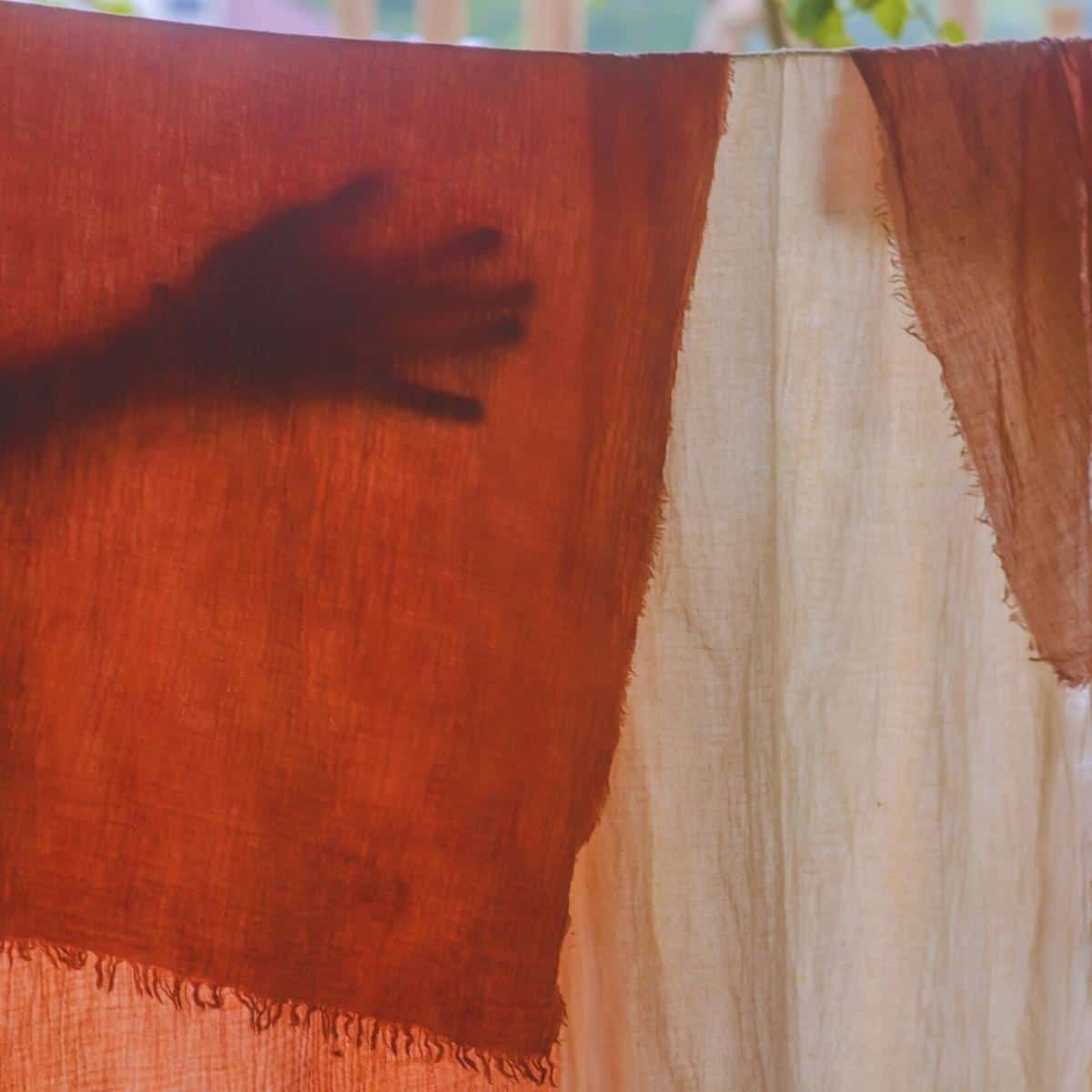
Jump to:
If you are looking for a natural way to dye fabric, onion skins are one of the easier options. Most of us will have onions around the house and they make a great natural dye for fabric and other materials. It also helps cut down on food waste!
What is Onion Skin Dye?
Onions have been used as a natural dye source for thousands of years. Their skins are rich in colorants that can be extracted relatively easily. Onion skins produce a range of lovely colors, from pale yellow to rich gold. The specific natural color depends on the type of onion and the pH of the dye solution.
To extract the dye, the skins are simmered in water for about an hour. The dyebath can then be used to color fabrics or other materials. In addition to their beauty, onion skin dyes are also eco-friendly and non-toxic. This makes them a great choice for those looking for a natural dye option.
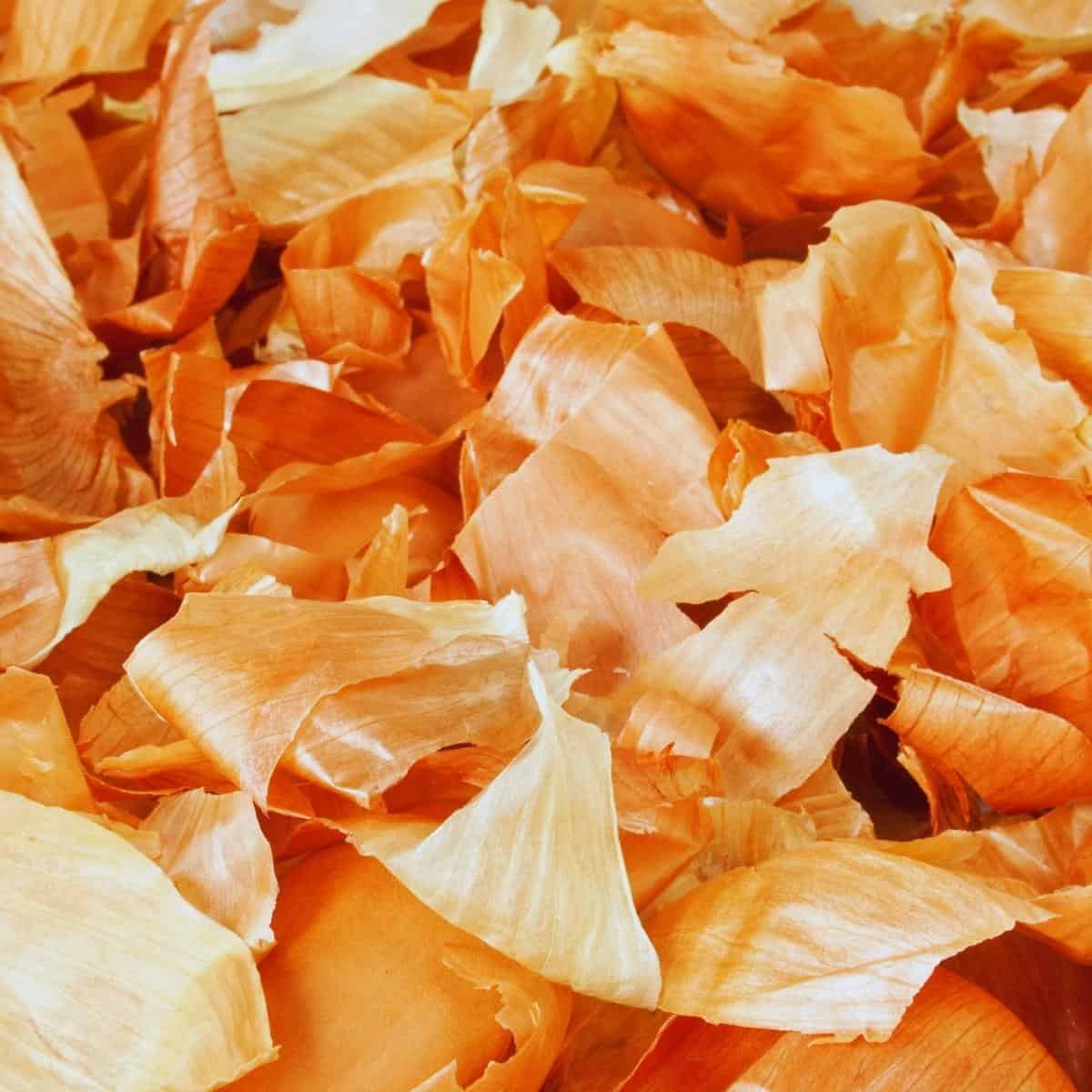
What Color Does Onion Skin Dye Produce?
Have you ever wondered what color onion skin dye would produce? Well, it turns out that it can vary depending on the type of onion used and the ratio of onion skins to water. I like to use both red onion skins and yellow onion skins and find it produces a nice peachy tone.
Rich in tannins, onions can produce a variety of pigment tones. Red onion skins will give a deeper brown color, while yellow gives a peachy yellow or even orange color. So, if you're looking for a specific hue, be sure to experiment with different types of onions!
Ingredients and Equipment
Equipment: 3 Non-reactive metal pots (avoid aluminum or cast iron, stainless steel is ideal), stainless steel tongs, mesh strainer, clothesline or drying rack.
Natural yarn, fiber, or fabric: Onion skin dye is a natural dye that works well on cotton, linen, wool, hemp, and silk. Just be sure to avoid polyester, as the colors will be very dull and won't hold well over time.
Onion skins: Have at least 10 but the more you have, the deeper the color you will get from the dye. Have fun experimenting here! It isn't an exact science when it comes to the number of onion skins. I simply like to use however many I happen to have on hand. The more skins you use, the more intense color they will produce.
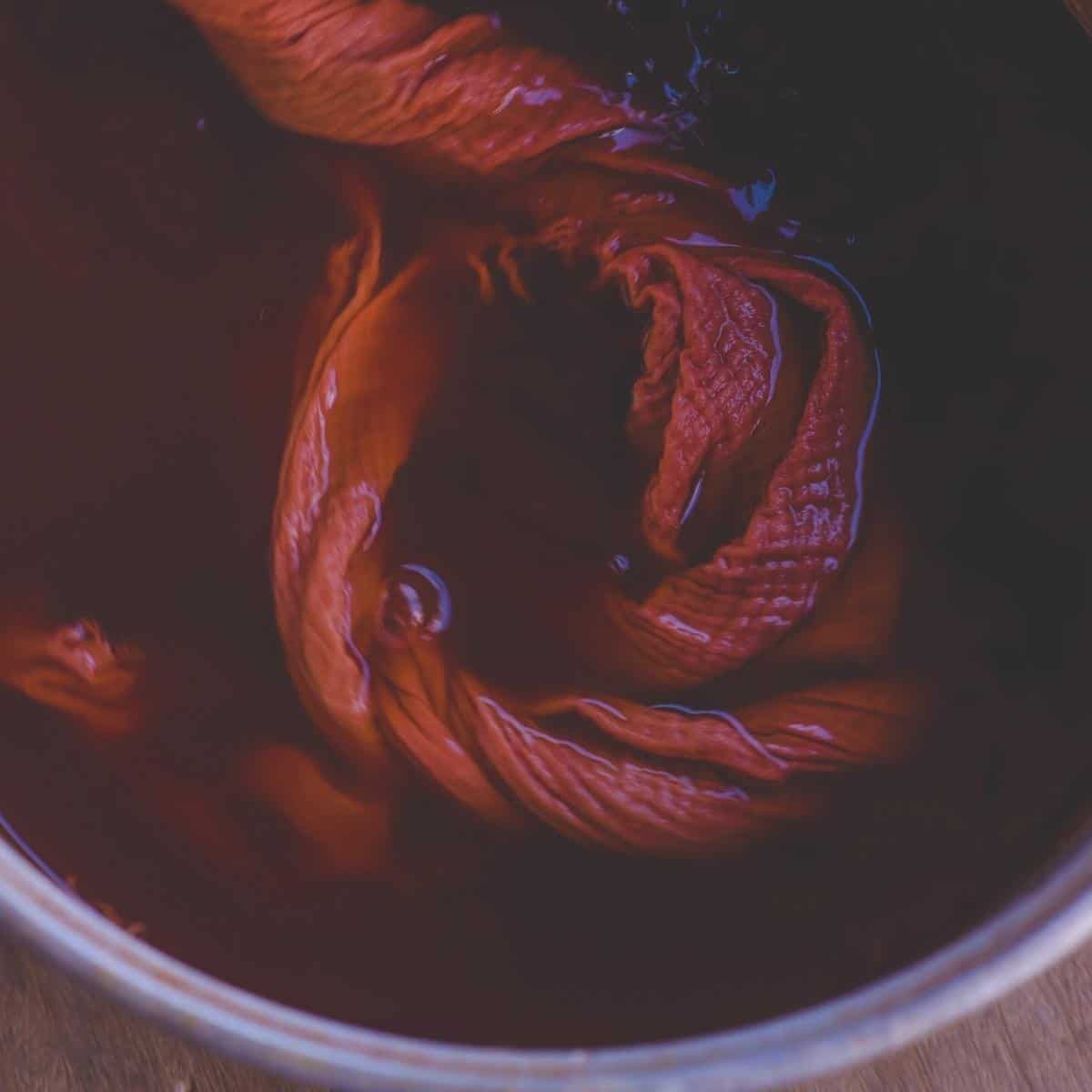
How Do You Make Onion Peel Dye?
First, saturate the fabric in water and set it to simmer. Make sure there's enough water so that the material can float freely, then heat gradually until it reaches a gentle simmer for 20 minutes straight. While the first pot is going, start working on the skins in another pot.
Fill another big pot with enough water to cover the skins. Then ensure that the skins float freely, add more water if needed. Put the lid on. Bring the bath to a boil then reduce heat and simmer for an hour.
As the onion skins cook, check the color carefully by opening the cover of your dye pot to allow the steam to escape. More dye will be released over time, but only up to a point. Check more frequently if you want a lighter tone (10-minute increments).
Place the mesh strainer over another pot and strain out the skins. The dye solution is now ready. Set the dye bath to simmering. After 30 minutes of simmering, add the wet cloth to the liquid. Simmer for a total of 30 minutes.
After 30 minutes, turn off the heat. Remove the cloth from the bath and set it in an empty pot, bucket or container to cool down.
After the fabric has cooled enough to handle, rinse it in clean water. Hang the fabric out to dry on a line or a portable drying rack in a dry place that isn't exposed to direct sunlight.
A word on wool: Rinse it with water that is the same temperature as the cloth. If you're washing wool and it's hot outside, use hot water instead of cold. It'll prevent felting, which can make the cloth rougher.
How Do You Set Onion Skin Dye?
Setting onion skin dye is a simple process that doesn't require any fixatives or binders. However, you can use a mordant to ensure colorfastness. To set the dye, simply dip the fabric into a solution of water and alum.
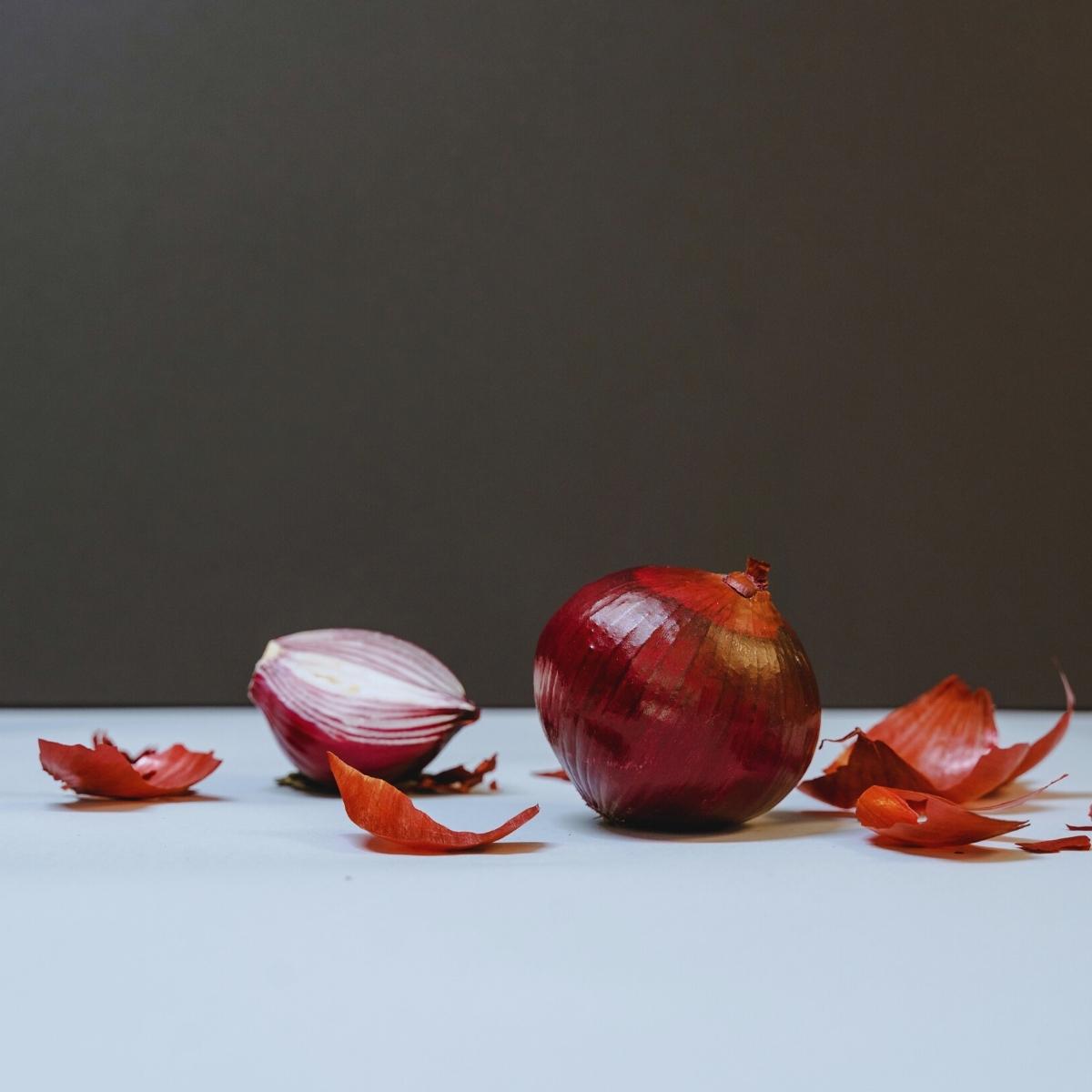
Frequently Asked Questions
When it comes to natural dyes, there are a lot of factors that can affect how long the color will last. One of the biggest factors is whether or not you use a mordant.
A mordant is a substance that helps the dye bind to the fabric, which in turn makes the color more light- and wash-fast. Many natural dyes require a mordant in order to stay vibrant for a longer period of time. However, onion skin dye does not need a mordant in order to be absorbed by the fibers. This makes it a great option for those who want to avoid using harsh chemicals or any extra steps.
Even without a mordant, onion skin dye is still relatively light- and wash-fast and you can get a natural tie-dye effect. However, it is important to note that all natural dyes will eventually fade over time.
To make onion skin paint, you'll need to start by boiling a pot of water. Then, add the onion skins and let them steep for about an hour. After that, remove the onion skins and discard them. Next, add the remaining liquid to a saucepan and boil it until it's reduced by half.
Once it's reduced, you can use it as paint or store it in a jar for later use. If you want a darker color, simply boil the liquid down further until it reaches your desired shade.
Making your own olive green onion dye is a simple process that anyone can do at home with just a few household ingredients. Follow the above process. If your fabric comes out looking more yellow than green, don't worry - this is normal.
To correct the color, simply dip the dyed fabric into an iron mordant solution. This will turn the fabric into a nice olive green shade. And there you have it - your very own homemade olive green dye!
Onion Skin Tie Dye
Prior to adding the fabric to the onion skin dye, you can tie the fabric using rubber bands to create a tie dye effect.
Color Change
Want to have fun with your onion skin dye? Experimenting with adding different types and amounts of vinegar to the dye bath for some fun color experimentation.
You Might Also Like
Onion Skins Dye
Equipment
- large non-reactive metal pots stainless steel pots work well
- tongs
Materials
- 1 piece natural fabric or yarn you would like dyed cotton, linen and wool work best
- at least 10 onion skins any type/color, use as many or as little as you would like
Instructions
- In a large pot, place the natural fabric or yarn you would like dyed. Cover with water and turn the heat to high. Once boiling, turn the heat down to a simmer and simmer the fabric/yarn for 20 minutes, then turn off the heat.
- Meanwhile, in another large pot, place the onion skins and enough water to cover them and allow them to float freely. Bring to a boil, cover, then reduce to a simmer. Simmer for one hour or until desired color strength is achieved.
- Strain the skins from the dye and return the dye to the pot (or strain into another pot). Bring the dye to a simmer and simmer for 30 minutes.
- Add the wet fabric or yarn to the simmering dye pot and simmer for 30 minutes longer. Turn off the heat, then carefully remove the fabric/yarn and place in an empty pot or container to cool down.
- Once the fabric/yarn is cool enough to handle, rinse it well under cool, running water. Gently wring out the fabric/yarn, then place on a clothesline or rack to air dry away from direct sunlight.
- See the full post above this recipe for more in-depth information on dyeing with onion skins. Enjoy!



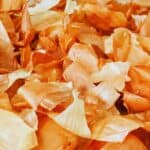
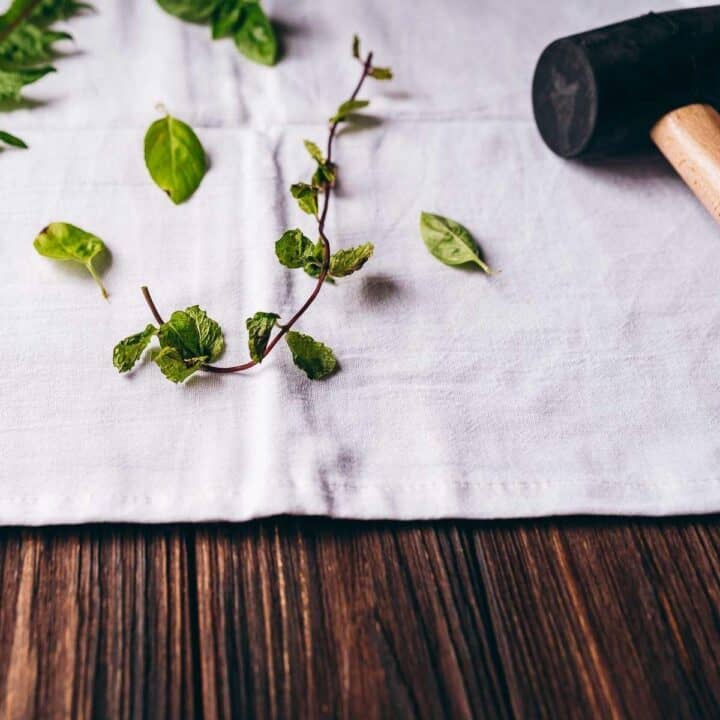

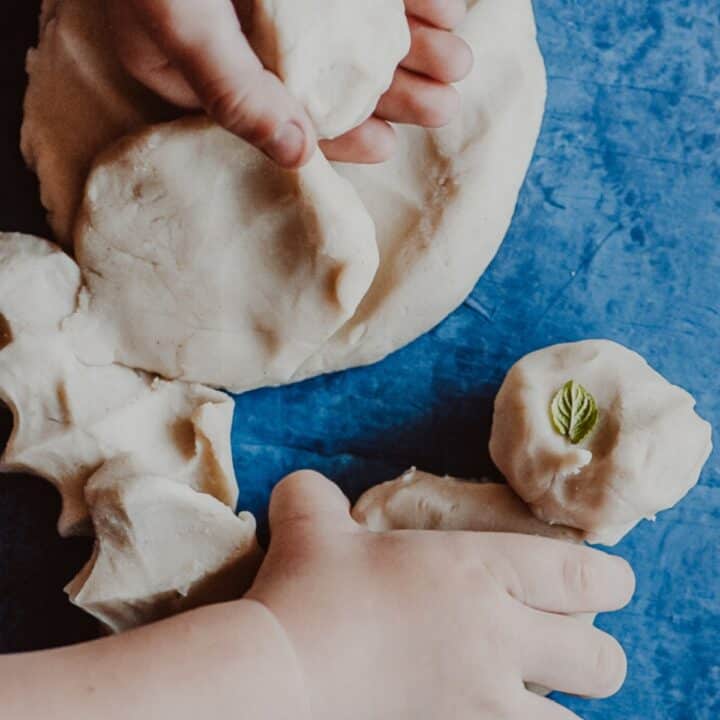
Comments
No Comments